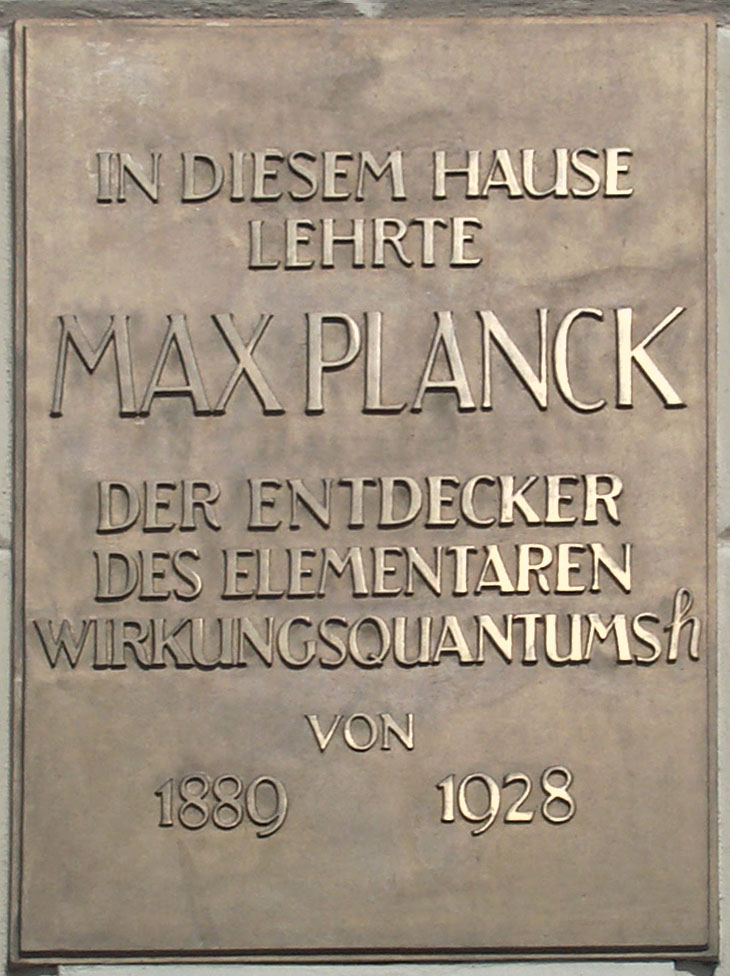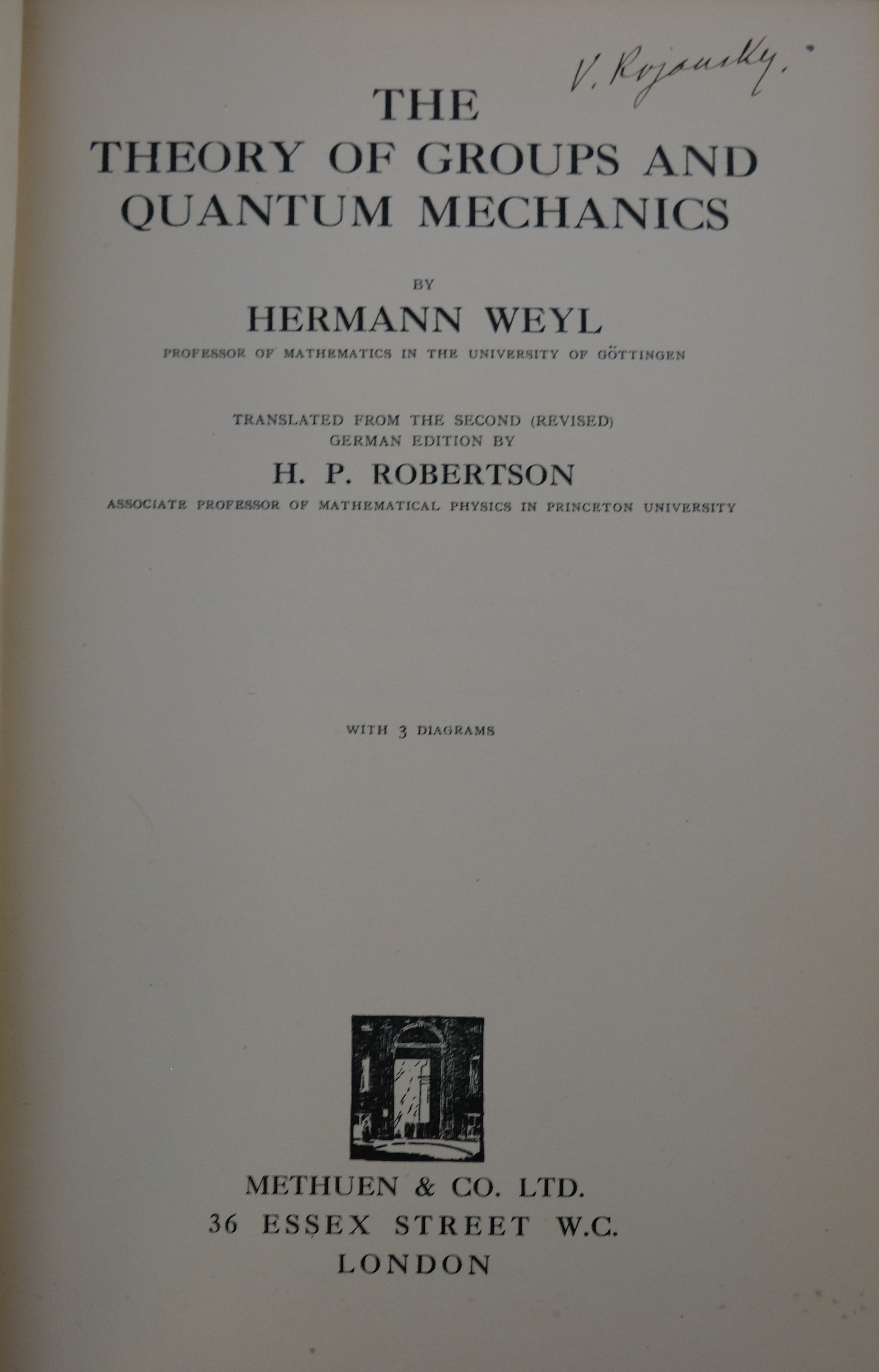|
Theta Representation
In mathematics, the theta representation is a particular representation of the Heisenberg group of quantum mechanics. It gains its name from the fact that the Jacobi theta function is invariant under the action of a discrete subgroup of the Heisenberg group. The representation was popularized by David Mumford. Construction The theta representation is a representation of the continuous Heisenberg group H_3(\R) over the field of the real numbers. In this representation, the group elements act on a particular Hilbert space. The construction below proceeds first by defining operators that correspond to the Heisenberg group generators. Next, the Hilbert space on which these act is defined, followed by a demonstration of the isomorphism to the usual representations. Group generators Let ''f''(''z'') be a holomorphic function, let ''a'' and ''b'' be real numbers, and let \tau be an arbitrary fixed complex number in the upper half-plane; that is, so that the imaginary part of \tau is po ... [...More Info...] [...Related Items...] OR: [Wikipedia] [Google] [Baidu] [Amazon] |
Mathematics
Mathematics is a field of study that discovers and organizes methods, Mathematical theory, theories and theorems that are developed and Mathematical proof, proved for the needs of empirical sciences and mathematics itself. There are many areas of mathematics, which include number theory (the study of numbers), algebra (the study of formulas and related structures), geometry (the study of shapes and spaces that contain them), Mathematical analysis, analysis (the study of continuous changes), and set theory (presently used as a foundation for all mathematics). Mathematics involves the description and manipulation of mathematical object, abstract objects that consist of either abstraction (mathematics), abstractions from nature orin modern mathematicspurely abstract entities that are stipulated to have certain properties, called axioms. Mathematics uses pure reason to proof (mathematics), prove properties of objects, a ''proof'' consisting of a succession of applications of in ... [...More Info...] [...Related Items...] OR: [Wikipedia] [Google] [Baidu] [Amazon] |
Entire Function
In complex analysis, an entire function, also called an integral function, is a complex-valued function that is holomorphic on the whole complex plane. Typical examples of entire functions are polynomials and the exponential function, and any finite sums, products and compositions of these, such as the trigonometric functions sine and cosine and their hyperbolic counterparts sinh and cosh, as well as derivatives and integrals of entire functions such as the error function. If an entire function f(z) has a root at w, then f(z)/(z-w), taking the limit value at w, is an entire function. On the other hand, the natural logarithm, the reciprocal function, and the square root are all not entire functions, nor can they be continued analytically to an entire function. A transcendental entire function is an entire function that is not a polynomial. Just as meromorphic functions can be viewed as a generalization of rational fractions, entire functions can be viewed as a ... [...More Info...] [...Related Items...] OR: [Wikipedia] [Google] [Baidu] [Amazon] |
Theta Functions
In mathematics, theta functions are special functions of several complex variables. They show up in many topics, including Abelian varieties, moduli spaces, quadratic forms, and solitons. Theta functions are parametrized by points in a tube domain inside a complex Lagrangian Grassmannian, namely the Siegel upper half space. The most common form of theta function is that occurring in the theory of elliptic functions. With respect to one of the complex variables (conventionally called ), a theta function has a property expressing its behavior with respect to the addition of a period of the associated elliptic functions, making it a quasiperiodic function. In the abstract theory this quasiperiodicity comes from the cohomology class of a line bundle on a complex torus, a condition of descent. One interpretation of theta functions when dealing with the heat equation is that "a theta function is a special function that describes the evolution of temperature on a segment domain su ... [...More Info...] [...Related Items...] OR: [Wikipedia] [Google] [Baidu] [Amazon] |
Elliptic Functions
In the mathematical field of complex analysis, elliptic functions are special kinds of meromorphic functions, that satisfy two periodicity conditions. They are named elliptic functions because they come from elliptic integrals. Those integrals are in turn named elliptic because they first were encountered for the calculation of the arc length of an ellipse. Important elliptic functions are Jacobi elliptic functions and the Weierstrass \wp-function. Further development of this theory led to hyperelliptic functions and modular forms. Definition A meromorphic function is called an elliptic function, if there are two \mathbb- linear independent complex numbers \omega_1,\omega_2\in\mathbb such that : f(z + \omega_1) = f(z) and f(z + \omega_2) = f(z), \quad \forall z\in\mathbb. So elliptic functions have two periods and are therefore doubly periodic functions. Period lattice and fundamental domain If f is an elliptic function with periods \omega_1,\omega_2 it also holds ... [...More Info...] [...Related Items...] OR: [Wikipedia] [Google] [Baidu] [Amazon] |
Hardy Space
In complex analysis, the Hardy spaces (or Hardy classes) H^p are spaces of holomorphic functions on the unit disk or upper half plane. They were introduced by Frigyes Riesz , who named them after G. H. Hardy, because of the paper . In real analysis Hardy spaces are spaces of distributions on the real -space \mathbb^n, defined (in the sense of distributions) as boundary values of the holomorphic functions. Hardy spaces are related to the ''Lp'' spaces. For 1 \leq p < \infty these Hardy spaces are s of spaces, while for |
Invariant (mathematics)
In mathematics, an invariant is a property of a mathematical object (or a class of mathematical objects) which remains unchanged after operations or transformations of a certain type are applied to the objects. The particular class of objects and type of transformations are usually indicated by the context in which the term is used. For example, the area of a triangle is an invariant with respect to isometries of the Euclidean plane. The phrases "invariant under" and "invariant to" a transformation are both used. More generally, an invariant with respect to an equivalence relation is a property that is constant on each equivalence class. Invariants are used in diverse areas of mathematics such as geometry, topology, algebra and discrete mathematics. Some important classes of transformations are defined by an invariant they leave unchanged. For example, conformal maps are defined as transformations of the plane that preserve angles. The discovery of invariants is an import ... [...More Info...] [...Related Items...] OR: [Wikipedia] [Google] [Baidu] [Amazon] |
Unitary Representation
In mathematics, a unitary representation of a group ''G'' is a linear representation π of ''G'' on a complex Hilbert space ''V'' such that π(''g'') is a unitary operator for every ''g'' ∈ ''G''. The general theory is well-developed in the case that ''G'' is a locally compact ( Hausdorff) topological group and the representations are strongly continuous. The theory has been widely applied in quantum mechanics since the 1920s, particularly influenced by Hermann Weyl's 1928 book '' Gruppentheorie und Quantenmechanik''. One of the pioneers in constructing a general theory of unitary representations, for any group ''G'' rather than just for particular groups useful in applications, was George Mackey. Context in harmonic analysis The theory of unitary representations of topological groups is closely connected with harmonic analysis. In the case of an abelian group ''G'', a fairly complete picture of the representation theory of ''G'' is given by Pontryagin duality. In genera ... [...More Info...] [...Related Items...] OR: [Wikipedia] [Google] [Baidu] [Amazon] |
Planck Constant
The Planck constant, or Planck's constant, denoted by h, is a fundamental physical constant of foundational importance in quantum mechanics: a photon's energy is equal to its frequency multiplied by the Planck constant, and the wavelength of a matter wave equals the Planck constant divided by the associated particle momentum. The constant was postulated by Max Planck in 1900 as a proportionality constant needed to explain experimental black-body radiation. Planck later referred to the constant as the "quantum of Action (physics), action". In 1905, Albert Einstein associated the "quantum" or minimal element of the energy to the electromagnetic wave itself. Max Planck received the 1918 Nobel Prize in Physics "in recognition of the services he rendered to the advancement of Physics by his discovery of energy quanta". In metrology, the Planck constant is used, together with other constants, to define the kilogram, the SI unit of mass. The SI units are defined in such a way that, w ... [...More Info...] [...Related Items...] OR: [Wikipedia] [Google] [Baidu] [Amazon] |
Module (mathematics)
In mathematics, a module is a generalization of the notion of vector space in which the field of scalars is replaced by a (not necessarily commutative) ring. The concept of a ''module'' also generalizes the notion of an abelian group, since the abelian groups are exactly the modules over the ring of integers. Like a vector space, a module is an additive abelian group, and scalar multiplication is distributive over the operations of addition between elements of the ring or module and is compatible with the ring multiplication. Modules are very closely related to the representation theory of groups. They are also one of the central notions of commutative algebra and homological algebra, and are used widely in algebraic geometry and algebraic topology. Introduction and definition Motivation In a vector space, the set of scalars is a field and acts on the vectors by scalar multiplication, subject to certain axioms such as the distributive law. In a module, the scal ... [...More Info...] [...Related Items...] OR: [Wikipedia] [Google] [Baidu] [Amazon] |
Isomorphic
In mathematics, an isomorphism is a structure-preserving mapping or morphism between two structures of the same type that can be reversed by an inverse mapping. Two mathematical structures are isomorphic if an isomorphism exists between them. The word is derived . The interest in isomorphisms lies in the fact that two isomorphic objects have the same properties (excluding further information such as additional structure or names of objects). Thus isomorphic structures cannot be distinguished from the point of view of structure only, and may often be identified. In mathematical jargon, one says that two objects are the same up to an isomorphism. A common example where isomorphic structures cannot be identified is when the structures are substructures of a larger one. For example, all subspaces of dimension one of a vector space are isomorphic and cannot be identified. An automorphism is an isomorphism from a structure to itself. An isomorphism between two structures is a c ... [...More Info...] [...Related Items...] OR: [Wikipedia] [Google] [Baidu] [Amazon] |
Lp Space
In mathematics, the spaces are function spaces defined using a natural generalization of the -norm for finite-dimensional vector spaces. They are sometimes called Lebesgue spaces, named after Henri Lebesgue , although according to the Bourbaki group they were first introduced by Frigyes Riesz . spaces form an important class of Banach spaces in functional analysis, and of topological vector spaces. Because of their key role in the mathematical analysis of measure and probability spaces, Lebesgue spaces are used also in the theoretical discussion of problems in physics, statistics, economics, finance, engineering, and other disciplines. Preliminaries The -norm in finite dimensions The Euclidean length of a vector x = (x_1, x_2, \dots, x_n) in the n-dimensional real vector space \Reals^n is given by the Euclidean norm: \, x\, _2 = \left(^2 + ^2 + \dotsb + ^2\right)^. The Euclidean distance between two points x and y is the length \, x - y\, _2 of the straight line b ... [...More Info...] [...Related Items...] OR: [Wikipedia] [Google] [Baidu] [Amazon] |
Weyl Representation
Hermann Klaus Hugo Weyl (; ; 9 November 1885 – 8 December 1955) was a German mathematician, theoretical physicist, logician and philosopher. Although much of his working life was spent in Zürich, Switzerland, and then Princeton, New Jersey, he is associated with the University of Göttingen tradition of mathematics, represented by Carl Friedrich Gauss, David Hilbert and Hermann Minkowski. His research has had major significance for theoretical physics as well as purely mathematical disciplines such as number theory. He was one of the most influential mathematicians of the twentieth century, and an important member of the Institute for Advanced Study during its early years. Weyl contributed to an exceptionally wide range of fields, including works on space, time, matter, philosophy, logic, symmetry and the history of mathematics. He was one of the first to conceive of combining general relativity with the laws of electromagnetism. Freeman Dyson wrote that Weyl alone bore comp ... [...More Info...] [...Related Items...] OR: [Wikipedia] [Google] [Baidu] [Amazon] |





